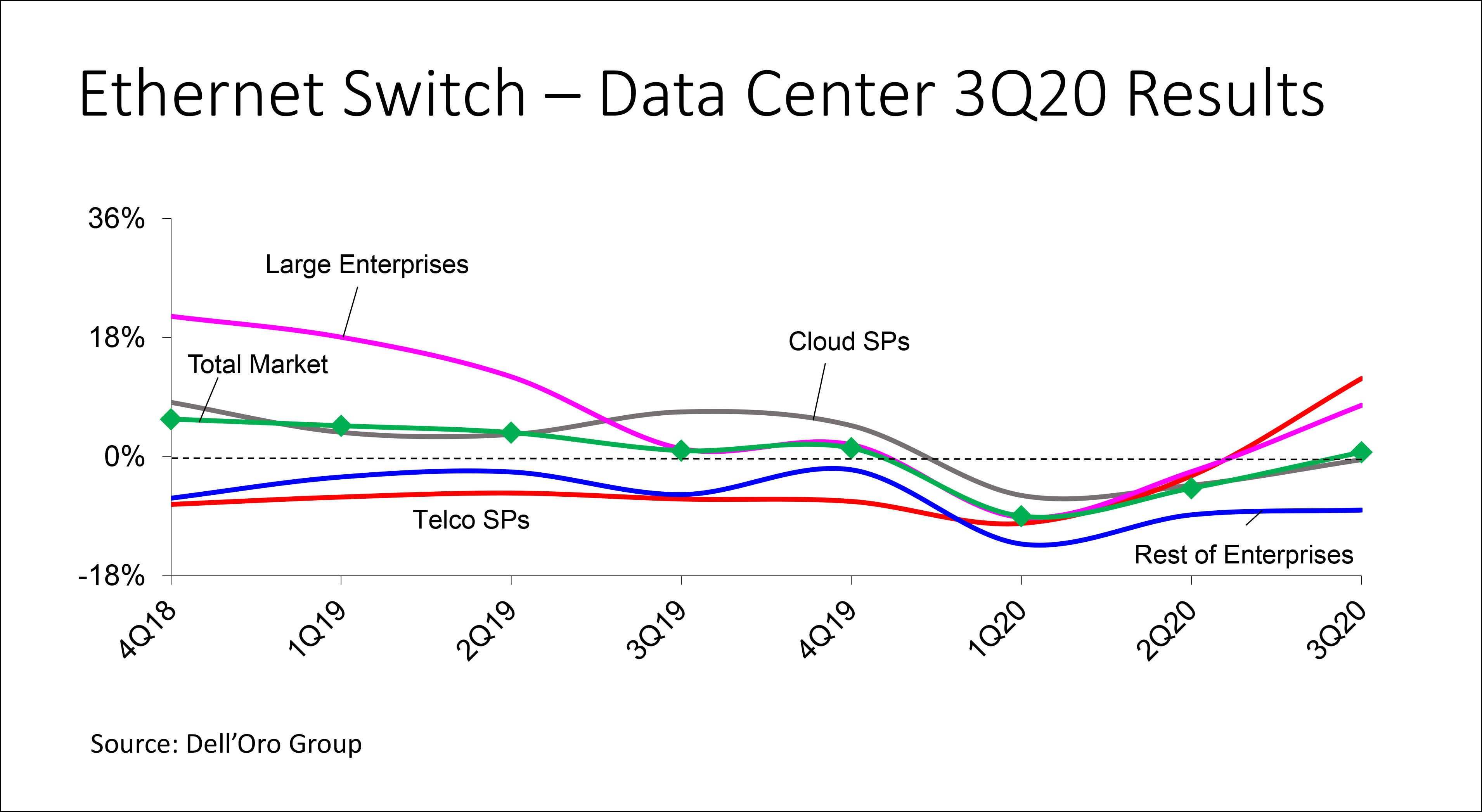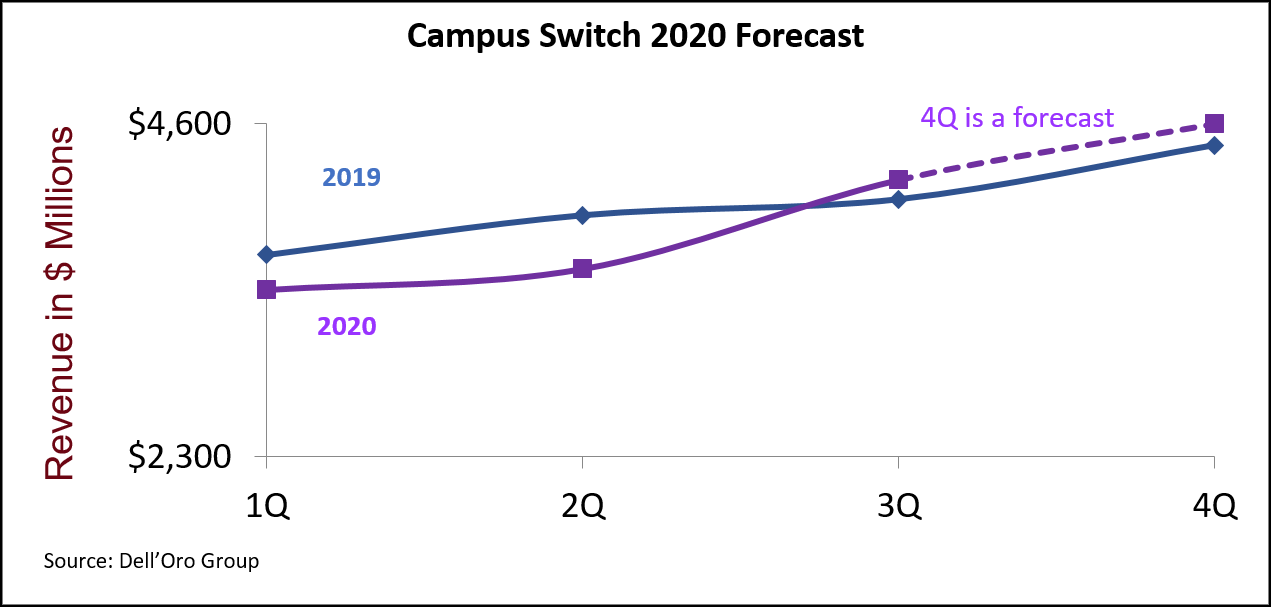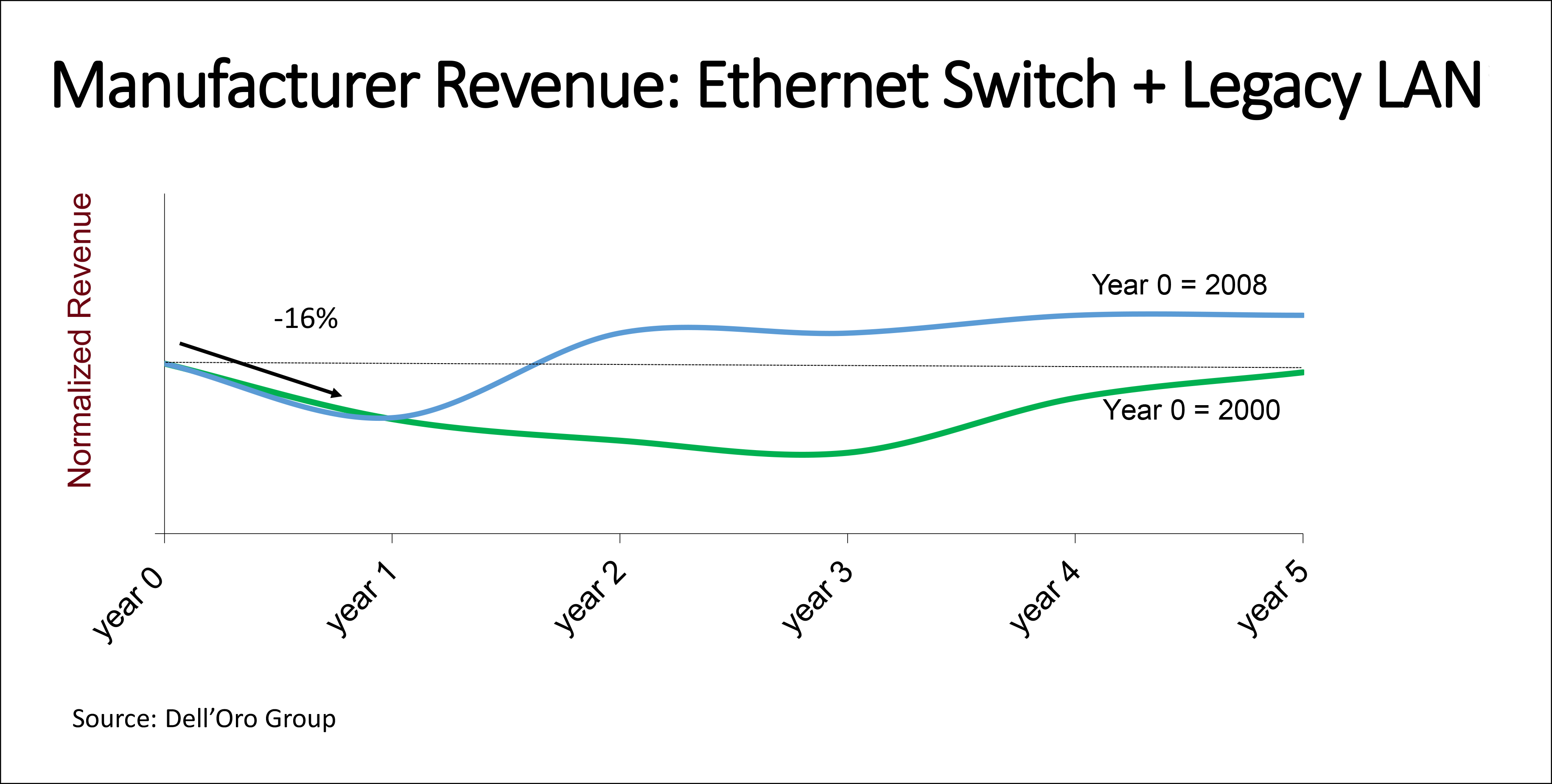The Outlook Is Improving, but Mixed
At the beginning of 2020, we expected a solid year for the WLAN market, driven by a still humming economy and a technology upgrade cycle to Wi-Fi 6. After the pandemic hit, we revised our forecast down steeply (double digit decline)—similar to prior economic declines. As the year progressed, however, WLAN proved resilient and 2020 revenue is on track to come slightly lower than 2019—a remarkable result of government stimulus coming primarily from the US, followed by China and select countries in EMEA such as Germany. For example, the US’ E-Rate program, which provides telecommunications funding for K-12 schools, was opened to a second round in September 2020 to allow schools to request additional funds for 2020-21 to address surging bandwidth demand stemming from remote learning. In China, the government’s Made in China 2025 initiative has provided incentives for manufacturers to modernize their processes.
Recently, during financial publications conference calls, a number of WLAN manufacturers announced that government stimulus would spill into 4Q20, and possibly into early 2021. Several economists at world leading banks recently raised GDP forecasts. With this brighter picture on the macro-economy, we raised our outlook for 2021. There are many promising signs, like the distribution of vaccines, and approval of another economic aid package in the US.
But there are also warning signals. We have read real estate reports highlighting over 40% Y/Y increases in excess commercial real estate in 30 major cities in the US. If real estate companies use technology to increase the attractiveness of their buildings WLAN sales could rise. Alternatively, spaces could remain empty or converted to residential. We are watching for indicators.
Another WLAN market constraint includes surging infection rates that are once again causing targeted shut-downs of economic sectors. Several WLAN vendors attributed 3Q20 softness in Europe to resurging infections particularly in southern counties. Meanwhile, a new strain of COVID-19 in the UK is spreading more rapidly than previous strains and many countries have banned travel to/from the UK. Clearly, there remains tremendous uncertainty and potential for volatile demand swings in 2021 as businesses open and close.
Could Wi-Fi 6E Stall Market Demand In 2021?
The 802.11 standard has seen regular updates over its 20+ year history, and so the looming update to 6E should not seem out of the ordinary. But two trends are changing market dynamics:
- Wi-Fi technology cycles have been shrinking, from every 4-5 years to 3 years. That makes it more compelling for buyers to sit out a cycle in anticipation of even better features and enhancements. We can see this playing out right now in the Wi-Fi 6 cycle, where adoption is significantly running behind what unfolded with Wi-Fi 5 Wave 2.
- Manufacturers advise us that client devices with Wi-Fi 6E capability will ship in early 2021. Early-to-market manufacturers of enterprise class access points advise that shipments may be as early as 2Q20. However, we don’t expect the majority to launch 6E products until end of 2021/early 2022. With Wi-Fi 6E just around the corner, users may pause purchases and wait for their favorite supplier to launch its 6E products. We anticipate high-end users and the high-end of the midrange market, which combined could comprise 20% or more of market revenues, will be willing to pay a premium to harness the benefits from Wi-Fi 6E.
Pandemic Accelerates Cloud Management
In the past several months, the pandemic has triggered intense interest in remote management capabilities given the complications around visiting locations in-person to install, upgrade, or troubleshoot equipment. The speed of innovation on cloud platforms is another benefit; for example, several vendors quickly repurposed their existing location-based technologies to develop contact-tracing applications to combat the spread of COVID-19.
Vendors have responded with increasing the variety of cloud managed products and pricing options, including lowering prices. Lower prices stimulate demand.
We expect this interest to carry into 2021 as the effects of the pandemic linger and organizations are going to be permanently more distributed over the long-term (working from home, more but smaller offices), all of which favors a cloud-based management approach.



